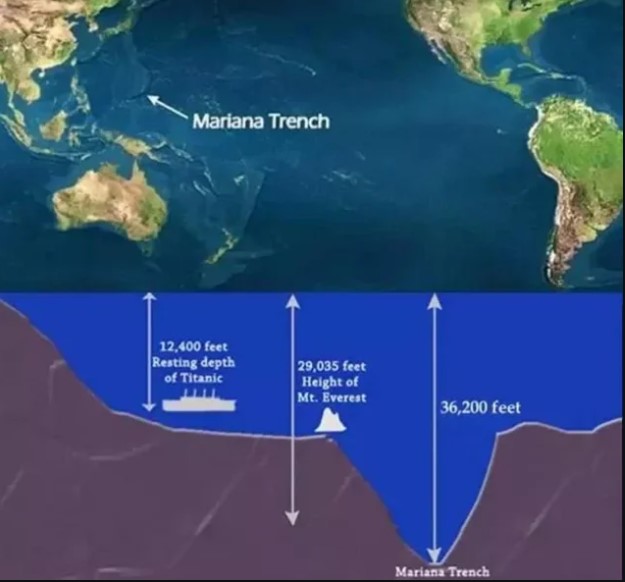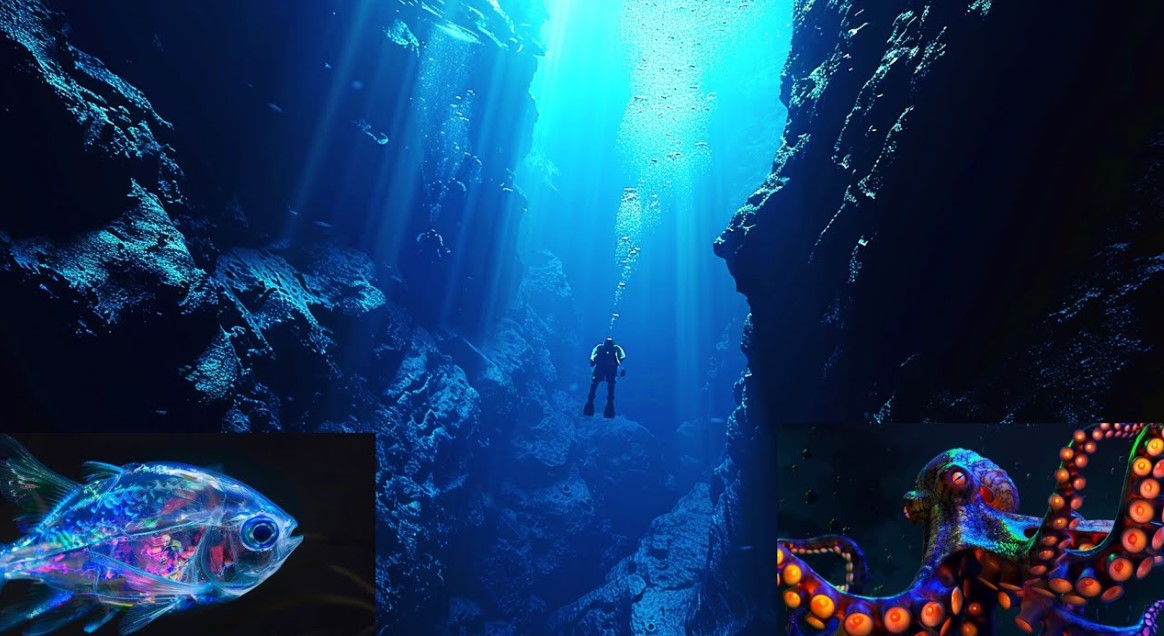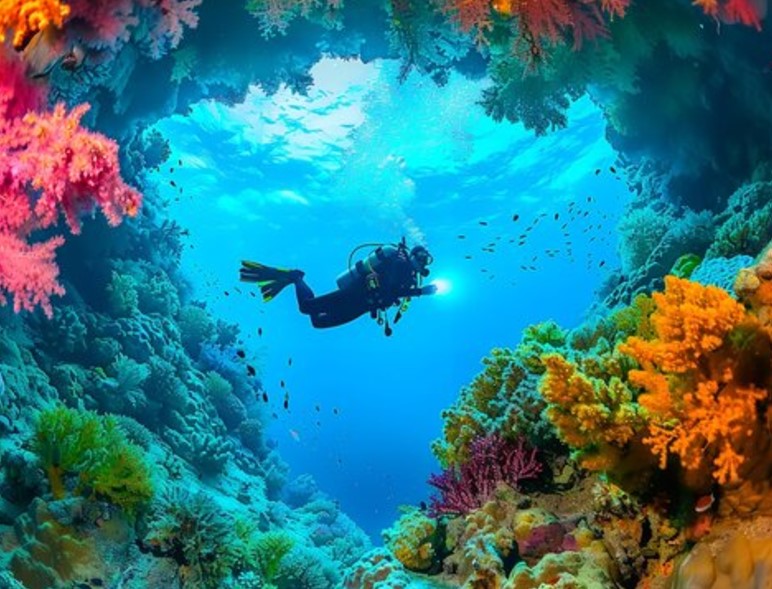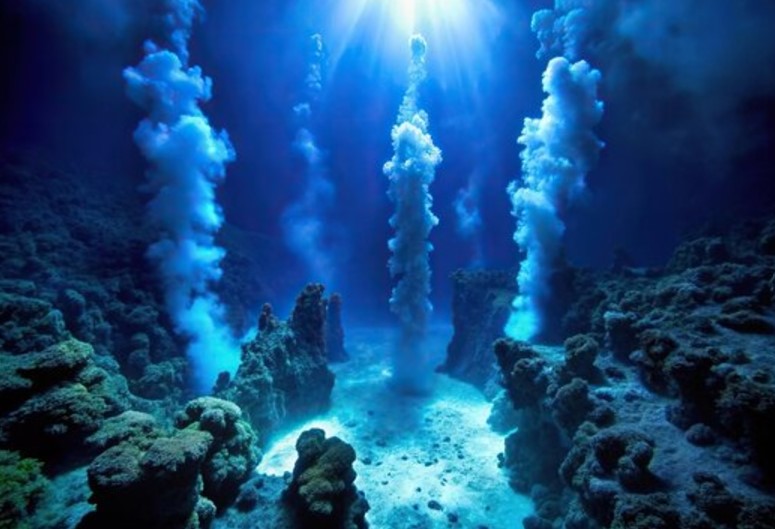The Mariana Trench, a crescent-shaped scar in the western Pacific Ocean, is the deepest part of the world’s oceans and an extraordinary natural wonder. With its unfathomable depths and mysterious marine life, it captivates scientists, adventurers, and enthusiasts alike. Spanning approximately 1,550 miles (2,500 kilometers) in length and with a maximum known depth of 36,070 feet (10,994 meters) at a point called Challenger Deep, the trench is a marvel of geology and biology. Let’s explore the beautiful wonders of the deep ocean with archeology.dulichvn.net
1. Understanding the Mariana Trench
1.1. The Formation and Location
The Mariana Trench is located east of the Philippines and south of Japan, near the Mariana Islands, from which it takes its name. It was formed by the process of subduction, where one tectonic plate is forced under another, creating a deep-sea trench. This geological phenomenon has been shaping the Earth’s crust for millions of years.

1.2. Challenger Deep: The Deepest Point
The trench’s deepest point, Challenger Deep, is located approximately 200 miles (322 kilometers) southwest of Guam. This site is so deep that if Mount Everest were placed inside, its peak would still be submerged by more than a mile of water.
See more: Mousa Broch: A Timeless Relic of Iron Age Scotland
1.3. A World of Extreme Conditions
The conditions in the trench are extreme:

- Pressure: Over 1,000 times the atmospheric pressure at sea level.
- Temperature: Near freezing, with limited light penetration.
- Environment: Home to specialized organisms adapted to survive in this harsh environment.
2. The Record-Breaking Dive of Victor Vescovo
On April 28, 2019, explorer Victor Vescovo made history by descending to a depth of 35,853 feet (10,927 meters) in his submersible, the DSV Limiting Factor. This dive surpassed all previous records for manned dives into the trench, solidifying Vescovo’s place in deep-sea exploration history.

2.1. A Feat of Engineering
The DSV Limiting Factor is a specially designed submersible capable of withstanding the immense pressure at the trench’s depths. Built for endurance and safety, it allowed Vescovo to remain submerged for several hours, gathering valuable data and footage.
2.2. Unveiling the Unknown
During the dive, Vescovo documented fascinating marine life and collected samples from the trench floor. This expedition highlighted not only the biological diversity of Challenger Deep but also the alarming presence of human-made debris, including plastic waste.
See more: The Dolmen de Bagneux: A Monument of Neolithic Ingenuity
3. Life and Mystery in the Depths
3.1. Unique Marine Life
Despite the harsh environment, the trench is home to remarkable creatures, such as:

- Amphipods: small, shrimp-like creatures adapted to high-pressure conditions.
- Xenophyophores: giant single-celled organisms thriving on the ocean floor.
- Snailfish: Fish that survive in near-complete darkness and crushing pressure.
3.2. Geological Insights
The trench provides a unique window into Earth’s geological processes, including volcanic activity and tectonic movement. Its sediment layers reveal clues about climate history and the movement of Earth’s plates.
3.3. Human Impact
The discovery of plastic waste in the depths of Challenger Deep underscores the far-reaching consequences of human activity. Even in the most remote corners of the planet, pollution leaves its mark.
4. Why the Mariana Trench Matters
4.1. A Frontier of Science
The trench represents one of the least-explored regions on Earth. Each expedition yields invaluable insights into oceanography, geology, and biology, pushing the boundaries of human knowledge.

4.2. Inspiration for Exploration
The challenges and achievements associated with exploring the trench inspire innovation in engineering and technology. These advancements have applications far beyond deep-sea exploration, benefiting fields such as space exploration and medicine.
4.3. Protecting the Deep
As exploration continues, so does the responsibility to preserve this fragile environment. The trench’s ecosystems are vulnerable to pollution, overfishing, and climate change, requiring global cooperation to safeguard their future.
Conclusion
The Mariana Trench stands as a testament to Earth’s incredible complexity and mystery. From its staggering depths to the unique life forms that call it home, it is a place of endless fascination and discovery. Thanks to pioneers like Victor Vescovo, our understanding of this extreme environment continues to grow, reminding us of the vast, unexplored worlds that still exist on our own planet.
Exploring the trench is not just about scientific discovery—it’s about connecting with the awe-inspiring power and beauty of nature. The Mariana Trench invites us to look deeper, dream bigger, and continue the quest to understand the mysteries of our world.

CÁC TIN KHÁC
Mary Walton: The Forgotten Inventor Who Helped Clean Up America’s Cities
Tomb of Queen Nefertari in the Valley of the Queens, Egypt
Discover the Hypostyle Hall of the Temple of Hathor at Dendera
Venus de Losange: Unveiling the Mystery of a 20,000-Year-Old Paleolithic Icon